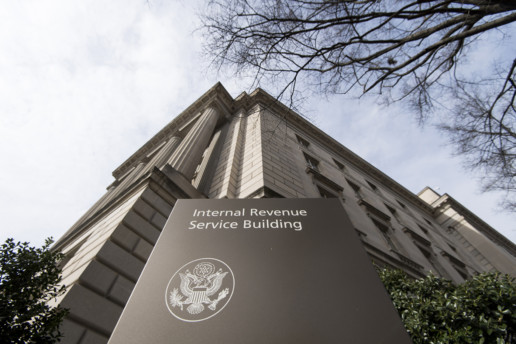The case for expanding wellness beyond the physical
Can addressing mental health, financial wellness and substance abuse in the workplace help employees feel fulfilled both personally and professionally? Newly released data shows that employees who have access to wellness programs that address most or all of the five aspects of well-being are more likely to say their job performance is excellent. Read this blog post to learn more about expanding wellness programs.
Client's wellness programs that only focus on physical fitness may need to rethink their approach.
By expanding wellness offerings to include programs that support workers’ mental and financial wellness, employer clients can increase the overall wellbeing of their workforce. Newly released data from Optum and the National Business Group on Health shows that employees who are offered programs that address most or all of the five aspects of wellbeing — physical, mental, financial, social and community — are significantly more likely to say their job performance is excellent, have a positive impression of their employer, and recommend their company as a place to work.
Over the last decade, workplace wellness initiatives have evolved beyond health risk assessments, physical fitness and nutrition programs. Many programs now include resources to address mental health, financial wellness and substance abuse.
“[Employers] must commit to looking beyond clinical health outcomes,” says Chuck Gillespie, CEO of the National Wellness Institute, speaking at a webcast from the International Foundation of Employee Benefit Plans. “You want employees to be fulfilled both personally and professionally.”
Even though some clients address financial, social and community health, most still focus on physical and mental health.
However, there are benefit trends that address wellness beyond physical fitness. The emergence of financial wellness benefits — such as early pay access, student loan assistance and retirement saving plans — may help employees feel less stressed and more financially secure, which has shown to improve overall health.
But having a good wellness program in place isn’t enough — employers also have to make sure that the offerings are inclusive and personalized, and that the programs have successful participation and engagement rates.
“These programs need to be adapted to who you are,” Gillespie says. “Customization has to be a key factor of what you’re looking at, because everybody is not going to fit inside your box.”
Effective wellness programs use both health and wellness data points and best practices, while keeping an eye on developing trends. Multi-dimensional wellness — looking at aspects such as social and community — can help companies understand the needs of their employees better.
“Employers need to better recognize personal choices, and if the employees are in an environment where they are functioning optimally,” Gillespie says. “Smokers hang out with smokers; the cultural foods that you eat with family may not be nutritious; is there social isolation; do you contribute to your community. [Most benefits] are work-oriented, but for most people, their life is their home life. It’s important to look at the degrees of which you feel positive and enthusiastic about your work and life.”
SOURCE: Nedlund, E. (15 August 2019) "The case for expanding wellness beyond the physical" (Web Blog Post). Retrieved from https://www.employeebenefitadviser.com/news/the-case-for-expanding-wellness-beyond-the-physical
Cadillac Tax May Finally Be Running Out of Gas
The Cadillac tax - a 40 percent tax on the most generous employer-provided health insurance plans - may be about to change. The Cadillac tax was supposed to take effect in 2018 but has been delayed twice and recently, the House voted to repeal this tax entirely. Read this blog post to learn more about this potential change.
The politics of healthcare are changing. And one of the most controversial parts of the Affordable Care Act — the so-called Cadillac tax — may be about to change with it.
The Cadillac tax is a 40% tax on the most generous employer-provided health insurance plans — those that cost more than $11,200 for an individual policy or $30,150 for family coverage. It was supposed to take effect in 2018, but Congress has delayed it twice. And the House recently voted overwhelmingly — 419-6 — to repeal it entirely. A Senate companion bill has 61 co-sponsors — more than enough to ensure passage.
The tax was always an unpopular and controversial part of the 2010 health law because the expectation was that employers would cut benefits to avoid paying the tax. But ACA backers said it was necessary to help pay for the law’s nearly $1 trillion cost and help stem the use of what was seen as potentially unnecessary care. In the ensuing years, however, public opinion has shifted decisively, as premiums and out-of-pocket costs have soared. Now the biggest health issue is not how much the nation is spending on healthcare, but how much individuals are.
“Voters deeply care about healthcare still,” said Heather Meade, a spokeswoman for the Alliance to Fight the 40, a coalition of business, labor and patient advocacy groups urging repeal of the Cadillac tax. “But it is about their own personal cost and their ability to afford healthcare.”
Stan Dorn, a senior fellow at Families USA, recently wrote in the journal Health Affairs that the backers of the ACA thought the tax was necessary to sell the law to people concerned about its price tag and to cut back on overly generous benefits that could drive up health costs. But transitions in healthcare, such as the increasing use of high-deductible plans, make that argument less compelling, he said.
“Nowadays, few observers would argue that [employer-sponsored insurance] gives most workers and their families’ excessive coverage,” he wrote.
The possibility of the tax has been “casting a statutory shadow over 180 million Americans’ health plans, which we know, from HR administrators and employee reps in real life, has added pressure to shift coverage into higher-deductible plans, which falls on the backs of working Americans,” said Rep. Joe Courtney (D-Conn.).
Support or opposition to the Cadillac tax has never broken down cleanly along party lines. For example, economists from across the ideological spectrum supported its inclusion in the ACA, and many continue to endorse it.
“If people have insurance that pays for too much, they don’t have enough skin in the game. They may be too quick to seek professional medical care. They may too easily accede when physicians recommend superfluous tests and treatments,” wrote N. Gregory Mankiw, an economics adviser in the George W. Bush administration, and Lawrence Summers, an economic aide to President Barack Obama, in a 2015 column. “Such behavior can drive national health spending beyond what is necessary and desirable.”
At the same time, however, the tax has been bitterly opposed by organized labor, a key constituency for Democrats. “Many unions have been unable to bargain for higher wages, but they have been taking more generous health benefits instead for years,” said Robert Blendon, a professor at the Harvard T.H. Chan School of Public Health who studies health and public opinion.
Now, unions say, those benefits are disappearing, with premiums, deductibles and other cost sharing rising as employers scramble to stay under the threshold for the impending tax. “Employers are using the tax as justification to shift more costs to employees, raising costs for workers and their families,” said a letter to members of Congress from the Service Employees International Union.
Deductibles have been rising for a number of reasons, the possibility of the tax among them. According to a 2018 survey by the federal government’s National Center for Health Statistics, nearly half of Americans under age 65 (47%) had high-deductible health plans. Those are plans that have deductibles of at least $1,350 for individual coverage or $2,700 for family coverage.
It’s not yet clear if the Senate will take up the House-passed bill, or one like it.
The senators leading the charge in that chamber — Mike Rounds (R-S.D.) and Martin Heinrich (D-N.M.) — have already written to Senate Majority Leader Mitch McConnell to urge him to bring the bill to the floor following the House’s overwhelming vote.
“At a time when healthcare expenses continue to go up, and Congress remains divided on many issues, the repeal of the Cadillac tax is something that has true bipartisan support,” the letter said.
Still, there is opposition. A letter to the Senate on July 29 from economists and other health experts argued that the tax “will help curtail the growth of private health insurance premiums by encouraging employers to limit the costs of plans to the tax-free amount.” The letter also pointed out that repealing the tax “would add directly to the federal budget deficit, an estimated $197 billion over the next decade, according to the Joint Committee on Taxation.”
Still, if McConnell does bring the bill up, there is little doubt it would pass, despite support for the tax from economists and budget watchdogs.
“When employers and employees agree in lockstep that they hate it, there are not enough economists out there to outvote them,” said former Senate GOP aide Rodney Whitlock, now a healthcare consultant.
Harvard professor Blendon agrees. “Voters are saying, ‘We want you to lower our health costs,’” he said. The Cadillac tax, at least for those affected by it, would do the opposite.
SOURCE: Rovner, J. ( 19 August, 2019) "Cadillac tax may finally be running out of gas" (Web Blog Post). Retrieved from https://www.employeebenefitadviser.com/articles/obamacare-excise-tax-may-be-at-an-end
Employer-sponsored savings programs could be the future of financial wellness
An estimated 43 percent of hourly workers have less than $400 set aside in their savings for emergencies. For those workers, an accident or unexpected expense can be financially devastating. Read this blog post from Employee Benefits Advisor to learn more about employer-sponsored savings programs.
For 43% of hourly workers who report having less than $400 in savings set aside for emergencies, an accident or unexpected expense can be financially devastating.
But employer-sponsored savings programs could be a viable solution. Low- and middle-income employees who are more financially secure have been shown to be less stressed and more productive when they have an employer-sponsored savings program, which may lead to lower healthcare costs, better customer service and stronger attendance, a new survey from nonprofit organization Commonwealth finds.
The national survey of 1,309 employees earning less than $60,000 a year found that employers offering workers savings interventions at the time of raise, can positively impact their employees’ personal finances. Three-quarters of hourly employees surveyed believe that if their employer offered savings options at the time of a raise, they would be less stressed and more confident about their finances.
“There's a lot of talk about financial stress, but when you're really living paycheck-to-paycheck, that stress is about being able to pay your bills on time,” says Commonwealth’s executive director Timothy Flacke. “It's about cash flow, and that's a particularly acute form of anxiety.”
The report analyzes the potential effects of savings programs including split direct-deposit paychecks, low-interest loans and savings accounts — and compares how those programs alleviate employees’ financial stress. Workers surveyed believe if their employer-provided savings tools they would be happier and more productive. Moreover, the survey found individuals with more in savings were less likely to have financial worries than those with little savings.
One of the companies partnered with Commonwealth to link raises with savings is Minnesota-based education company New Horizon Academy. In the beginning of the year, the company piloted a new savings program that gives its employees the option to have the raise diverted through the payroll system to a savings account each pay period, instead of having it go into their normal checking account.
“Through this, our employees are beginning to build up some financial reserves in case of an emergency, or life circumstances that requires them to dip into a savings account,” says Chad Dunkley, CEO of New Horizon Academy. Although it’s too early to state results from the pilot program, the company hopes it will have a positive long-term impact on the financial health of its employees, Dunkley says.
“This is just one of those additional ways [to] stabilize our employees, so they can come into the classroom without the financial stress that certain situations cause when you're not prepared for an emergency, whether it's new tires on your car or health issues,” he says.
SOURCE: Nedlund, E. (19 August 2019) "Employer-sponsored savings programs could be the future of financial wellness" (Web Blog Post). Retrieved from https://www.employeebenefitadviser.com/news/reduce-stress-increase-productivity-with-financial-wellness
Association Health Plans & Their Benefits
Many individuals do not understand various insurance terms and the plans available to them. Most employers have a hard time trying to find the best and the most affordable coverage for their employees. It is important you find an insurance company or agent that can break it down for you to get the best coverage.

We asked our founding partner and CEO, Jamie Charlton, to shed some light on Association Health Plans (AHPs) and also give their advantages and disadvantages.
What is an AHP, and How Does it Work?
According to Charlton, AHP or Association Health Plans are a conglomeration of smaller groups that come under the guise of a larger umbrella to leverage bulk buying power. They might not be small companies per se, but are those that come together under one industry or from the same geographic area to strengthen their negotiating power. They can be a group of manufacturers, printers or self-employed individuals from the same jurisdiction. An example of such an association is the Chamber Alliance.
Ideally, small businesses, including self-employed individuals in the same industry or geographic location, can merge to form larger groups to get healthcare plans as one large group. Coalitions are more or less the same as these associations, only that coalitions are groups made up of non-profit institutions such as schools. Associations are mostly businesses or organizations aimed at making profits.
AHP Expansion
United States (US) President, Donald Trump, issued an executive order to promote healthcare coverage in the US on October 12, 2017. The order aims at expanding access to small businesses to get the same competitive advantage as large corporations when purchasing health insurance. This order was meant to provide more affordable health insurance plans to as many individuals as possible. These individuals include farmers, wage earners and employees of any small business in the US.
Charlton has a slightly different view of this expansion. Though it has helped a few individuals, the expansion does not present any advantage as the rates keep going higher with age. He explained, “AHPs don’t have an advantage in the long run, unless they have a long-term sponsor.” AHPs have always been in existence, and the expansion is just political rhetoric that will give the plans some credibility.
Advantages of an AHP to Smaller Employers
There are some advantages that come with AHPs, both to the employer and the employees. These include:
- Negotiating power
- Spreading the risk
- Maintaining lower rates instead of lumping them into unverified age groups
- No charging different premiums to employees based on health status
- No charging different rates to employers based on the health status of their employees
- Healthy, younger groups will be fully underwritten
- Self-employed individuals with a few employees and those with no employees are also eligible
- Will not cherry pick or discriminate based on the status of an applicant pre-existing or previous health condition.
There are also some disadvantages. They include:
- Many of these plans might not allow single person groups.
- An individual must be a bona-fide member of a group and pay a membership fee.

The Role Saxon Plays in Helping the Employer
Saxon prides itself as a top provider of AHPs. The company has experts with knowledge of how this system works. Writing these plans for the last four years, Saxon can offer stable rates and consistent, professional assistance.
For more information regarding employee benefits and competitive benefits packages that fit your business strategy, you can contact Jamie Charlton at 513-573-0129 or via email at jcharlton@gosaxon.com.
Nine-to-Five at Home
When you hear the phrase "nine-to-five" you picture a day in the office. According to a recent study by the U.S. Bureau of Labor Statistics more employees are getting the job done from home. This study accounts for the time spent doing activities that are non-work and work-related.
- While most employees still spend most of their hours at work in the office, U.S. Bureau of Labor Statistics (BLS) analysis showed that more workers in management, professional and related (MPR) occupations, especially, are working at home all or part of the time; they are three times more likely to work at home compared to people in other occupations. The analysis comes from the American Time Use Survey, which measures the time people spend doing a range of activities, both work- and nonwork-related.
- Not only are MPR workers more likely than other employees to work at home, but they also worked on average fewer hours in the office and more hours at home on weekdays between 2013 and 2017 than they did between 2003 and 2007. The average work time for MPR workers between 2013 and 2017 also varied by location — those who worked only at home worked the shortest length of time. BLS noted that people worked in different locations for various reasons, such as to fit in appointments, work around commitments or catch up on their work.
- MPR workers in the arts, design, entertainment, sports, media, education, training and library occupations were found to be the least likely to work only at their worksite, while healthcare practitioners and technical workers were most likely to work only onsite.
The BLS analysis supports what other studies have also noted: employees are increasingly taking advantage of remote work options, and in some job positions — such as tech developers — remote working is considered the norm. Flexible work options, generally, have captured public opinion and factor into job seekers' decisions over whether to accept a job offer, a previous IWG study showed; for that reason, 83% of employers have adopted a flexible workspace policy in the past decade.
A significant number of workers say they'd be more productive at home thanks to fewer distractions and interruptions and less stress from commuting, a 2018 FlexJob survey noted. But many employees particularly enjoy having the option to choose where to work, even if that option tends toward the office for some demographic groups. Despite the growing popularity of such arrangements, however, many still do not have a flexible work policy in place; only 36% of respondents to a Randstad Workmonitor study said their employers support flexible work options.
Improved technology has enabled MPR workers to work from home or other remote locations. For jobs that don't allow remote or flexible work options due to the nature of the work, such as in healthcare or retail customer service jobs, some employers have instead opted for flexible or predictive scheduling programs to give workers more control over their work hours.
SOURCE- Bolden-Barrett, Valerie. (24 July 2019). “BLS: More employees are working from home regularly” (Web Blog Post). Retrieved from https://www.hrdive.com/news/bls-more-employees-are-working-from-home-regularly
Summertime—and Working Ain’t Easy
Providing flexible hours during the summer months is often appreciated by employees and can help boost engagement. Continue reading this blog post from SHRM for best practices on managing staff during the summer months.
Summertime is that season when "the livin' is easy," as the famous tune by George Gershwin goes—a season when work often takes a back seat to pool parties, barbecues and beach vacations.
How do employers keep workers' heads in the game when their toes are itching for the sand? Or how do they plan for the disruption that summer holidays and vacation schedules inevitably bring? What are their best practices for keeping productivity high?
In the health care industry, patients' needs mean productivity can't fluctuate with the seasons. At Maine Medical Center in Portland, nurse manager Michele Higgins oversees a staff of 70 on an adult general medical unit.
"Summer is busy in health care, especially at a level-one trauma hospital such as Maine Med, but we continue to care effectively for patients, and we remain patient-centered," she said.
Anticipating higher patient traffic in the summer months, the hospital pushes out its June, July and August schedules as early as March. Staff view the schedules, are reminded of guidelines for taking vacation time, and plan time off around shifts or swap shifts with co-workers.
But what happens when an employee unexpectedly calls out "sick" over the Fourth of July weekend? A pool of floating in-house nurses responds to shortages. When the pool of nurses cannot meet the demand, managers ask staff to cover shifts for incentive pay. According to Higgins, a 10-year Maine Med veteran, the numbers typically work out and the medical center maintains favorable nurse-to-patient ratios. But she's always prepared to show up in scrubs and jump in as needed. "Being present is important to me," she said. "I make myself accessible and stay positive, supporting the staff and recognizing their efforts."
Higgins rewards her staff with hospital-sponsored special events throughout the summer. These include "nurses' week" at the beginning of May, when employees win gift cards and goody bags in daily raffles, participate in a book swap, and play games like cornhole. Later in the summer, senior leaders host staff appreciation lunches, smoothie breaks on the patio and an ice cream bar. The hospital also reserves box seats for each of its 23 units at minor league baseball games at Hadlock Field in downtown Portland.
"Maine Med is a great place to work," Higgins said. "But busy is the norm."
Workers Appreciate Flexibility
For employees who are parents, juggling work and school-age children who are either home for the summer, at camps or in day care can be challenging—and expensive.
Recognizing this, some employers observe summer hours so parents can start and end the workday earlier. Employees at Princeton University call it quits at 4:30 p.m. instead of 5 p.m. from June 1 through Labor Day.
River City Dental, a dental office in Williamsport, Md., operates on an 8 a.m. to 3:30 p.m. schedule in June, July and August. Office manager Lori Robine reports that the employees, many of whom are parents, appreciate the flexibility of the shortened workday and increased free time.
Workplace flexibility is another benefit that can boost spirits—and productivity—during the summer months. Maine Medical Center can't tweak its summer hours, but fewer meetings are held, and they're even put on hold in July.
When summer arrives, workplace productivity doesn't have to suffer. Employers can look for opportunities to be flexible with scheduling and dress codes, find ways to recognize and reward employees, and host events that celebrate the warm months.
Michele Poacelli is a freelancer based in Mercersburg, Pa.
SOURCE: Poacelli, M. (12 July 2019) "Summertime—and Working Ain’t Easy" (Web Blog Post). Retrieved from https://www.shrm.org/ResourcesAndTools/hr-topics/employee-relations/Pages/employee-engagement-in-the-summer.aspx
The unpaid caregiver crisis is landing on employers’ doorsteps
According to new data, 43 million Americans currently are tending to a family member in need, which can be both physically and emotionally taxing on the caregiver. Read this blog post for more on the unpaid caregiver crisis.
Scott Williams knows firsthand what it is like to support a sick relative. But even after spending 20 years tending to his ailing mother, he didn’t consider himself a caregiver.
“She suffered from multiple chronic conditions, but I never considered myself a caregiver,” he says. “I just thought I was a son who loved his mom.”
Williams, who is vice president and head of global patient advocacy and strategic partnerships at the biopharmaceutical company EMD Serono, realized that because he didn’t think of himself as a caregiver, he wasn’t able to take advantage of the benefit offerings his company had in place for these workers.
“Until I really started to think about it, I didn’t realize how burned out I really was,” Williams says. “I was in that sandwich generation, which is a situation that many caregivers find themselves in sometimes.”
Williams dilemma is not uncommon. There are 43 million Americans currently tending to a family member in need, according to data from LIMRA. AARP estimates that caring for a loved one can cost close to $7,000 out of pocket.
"I never considered myself a caregiver, I just thought I was a son who loved his mom.” Scott Williams
It is also both physically and emotionally taxing — 57% of caregivers need medical care or support for a mental health condition, according to an Embracing Carers survey. About 55% of caregivers say their own physical health has diminished, 54% say they don’t have time to tend to their own medical needs and 47% report feeling depressed.
The caregiving crisis puts employers in a unique position to offer benefits, policies and resources that can ease some of this stress. Indeed, there are some employers that already stepped up. For example, Starbucks launched a new caregiver benefit last year. Amgen and Brinker International, use digital tools to offer caregiving benefits to their workers.
Regardless, the need for employer-provided backup child, adult and senior care options is still largely unmet. Only 4% of employers offer backup childcare services and only 2% offer backup elder care, according to data from the Society for Human Resource Management.
The breakdown of communication between the company and the worker may be keeping the majority of employees from accessing the assistance they need. If employers ignore this issue or simply fail to communicate with employees, it can end up becoming a burden that costs the company money or result in the loss of a worker.
But there are some steps employers can take. The first is to identify the responsibilities of the family caregiver so that employers can better address their needs. One of the biggest responsibilities caregivers face is the amount of time they have to spend transporting loved ones, says Ellen Kelsay, chief strategy officer for the National Business Group on Health citing recent data on the subject. These employees often have to leave work early, come in late or take off to get an ill family member to their doctor’s appointments.

“The financial impact is considerable, many of these employees are paying out of their own pocket to support the medical care of a loved one. So there is financial assistance that they need,” Kelsay says. “When you think about the impact on the employee, they [struggle from a] physical, mental and emotional wellbeing perspective.”
About half of unpaid caregivers work full time outside of their home and many have to take leaves of absence or cut back their work hours due to the demands of caring for a family member, LIMRA research shows. A significant portion of employees had to stop working in order to better care for their loved one — about 22% say they voluntarily quit their jobs, 18% had their employment terminated and 13% chose to retire early.
Unlimited PTO, remote work, shared sick time and an employee resource group are just a few offerings employers can offer staff, Williams says. For instance, EMD Serono created an employee resource group for caregivers, a peer to peer network where employers can find dedicated resources, while also having an exchange with colleagues who are going through similar situations.
But there is still more that can be done, Williams says. Training managers to be more understanding of an employee’s needs can go a long way toward bridging the gap. Another option companies should consider is enhancing employee assistance programs to include caregivers, he adds.
“One of the things we see employers doing that can really help is being able to raise the visibility of [the available] resources,” Williams says. “To really ensure that whether you’re a new employee or an established employee in an unpaid caregiving situation that you have access to them.”
SOURCE: Schiavo, A. (11 July 2019) "The unpaid caregiver crisis is landing on employers’ doorsteps" (Web Blog Post). Retrieved from https://www.benefitnews.com/news/improving-caregiving-challenges-through-the-workplace
Giving onsite clinics an engagement booster shot
In efforts to reduce healthcare spend and increase the population's health, many employers are offering a variety of employee wellness services and programs. Read this blog post to learn more about increasing engagement in onsite clinics.
Employers of all sizes and industries are currently offering a variety of wellness services that include preventive, acute, primary, chronic disease and occupational healthcare programs at or near the worksite. These benefits are intended to reduce healthcare spend, increase the population’s health and productivity and positively impact recruitment and retention efforts.
In fact, according to two 2018 studies by the National Association of Worksite Health Centers, more than one-third of all employers and close to 50% of large firms are now operating worksite clinics. But just because employers offer such benefits doesn’t mean employees will take advantage of these services, even when they’re free.
But many employers are frustrated to find that 20% or less of the targeted or covered workers utilizes their programs — with millions of dollars in benefits wasted.
Failure can be caused by lack of promotion, inadequate incentives, poor communications or providers who don’t fit into the culture of the employer. However, one of the most significant problems than can undermine a benefit program, especially a worksite clinic, is when employees don’t trust that their personal health data will be confidential and fear it will be used for employment decisions.
Employers who achieve high benefit utilization build the foundation for success by informing their workforce, prior to a benefit or clinic being available and on an ongoing basis, of the many federal and state confidentiality and privacy laws that dictate who can receive personal and occupational health information and the limitations placed on employers.
Communications, posters, presentations and other marketing vehicles must assure employees that the employer will only see aggregate, not personal data from the offered benefit programs. Emphasize that the program’s or clinic’s medical providers will be the only individuals dealing with this information, and that by law they are legally and ethically obligated to keep this confidential.
Understanding the culture and labor-management dynamics of an organization are also critical to building trust. To increase use, it’s often best to market the program or facility under a new brand name, such as “The Healthy Life” or use the name of the provider who manages the program or clinic, rather than the employer’s name.
The physical design or location of a benefit program or clinic also needs to be kept in mind. Clinical or counseling activities should be separate from business offices or fitness centers where a person taking advantage of the benefit could be seen by their peers, managers and supervisors.
Achieving engagement in a health benefit program or clinic is key to its success, as well as obtaining the resources and support of senior management for its expansion and continuance. The design, marketing and location of benefit programs need to be well-planned so the workforce is confident that the confidentiality of their patient records will be maintained and not used for employment decisions.
SOURCE: Boress, L. (9 July 2019) "Giving onsite clinics an engagement booster shot" (Web Blog Post). Retrieved from https://www.benefitnews.com/opinion/how-to-increase-employee-engagement-in-healthcare-benefits
PCORI Fee Is Due by July 31 for Self-Insured Health Plans
The annual fee for the federal Patient-Centered Outcomes Research Institute (PCORI) is due July 31, 2019. Plans with terms ending after September 30, 2012, and before October 1, 2019, are required to pay an annual PCORI fee. Read this article from SHRM to learn more.
An earlier version of this article was posted on November 6, 2018
The next annual fee that sponsors of self-insured health plans must pay to fund the federal Patient-Centered Outcomes Research Institute (PCORI) is due July 31, 2019.
The Affordable Care Act mandated payment of an annual PCORI fee by plans with terms ending after Sept. 30, 2012, and before Oct. 1, 2019, to provide initial funding for the Washington, D.C.-based institute, which funds research on the comparative effectiveness of medical treatments. Self-insured plans pay the fee themselves, while insurance companies pay the fee for fully insured plans but may pass the cost along to employers through higher premiums.
The IRS treats the fee like an excise tax.
The PCORI fee is due by the July 31 following the last day of the plan year. The final PCORI payment for sponsors of 2018 calendar-year plans is due by July 31, 2019. The final PCORI fee for plan years ending from Jan. 1, 2019 to Sept. 30, 2019, will be due by July 31, 2020.
In Notice 2018-85, the IRS set the amount used to calculate the PCORI fee at $2.45 per person covered by plan years ending Oct. 1, 2018, through Sept. 30, 2019.
The chart below shows the fees to be paid in 2019, which are slightly higher than the fees owed in 2018. The per-enrollee amount depends on when the plan year ended, as in previous years.
| Fee per Plan Enrollee for Payment Due July 31, 2019 |
|
| Plan years ending from Oct. 1, 2018, through Sept. 30, 2019. | $2.45 |
| Fee per Plan Enrollee for Payment Due July 31, 2018 |
|
| Plan years ending from Oct. 1, 2017, through Dec. 31, 2017, including calendar-year plans. | $2.39 |
| Plan years ending from Jan. 1, 2017, through Sept. 30, 2017 | $2.26 |
| Source: IRS. |
Nearing the End
The PCORI fee will not be assessed for plan years ending after Sept. 30, 2019, "which means that for a calendar-year plan, the last year for assessment is the 2018 calendar year," wrote Richard Stover, a New York City-based principal at HR consultancy Buck Global, and Amy Dunn, a principal in Buck's Knowledge Resource Center.
For noncalendar-year plans that end between Jan. 1, 2019 and Sept. 30, 3019, however, there will be one last PCORI payment due by July 31, 2020.
"There will not be any PCORI fee for plan years that end on October 1, 2019 or later," according to 360 Corporate Benefit Advisors.
The PCORI fee was first assessed for plan years ending after Sept. 30, 2012. The fee for the first plan year was $1 per plan enrollee, which increased to $2 per enrollee in the second year and was then indexed in subsequent years based on the increase in national health expenditures.
FSAs and HRAs
In addition to self-insured medical plans, health flexible spending accounts (health FSAs) and health reimbursement arrangements (HRAs) that fail to qualify as “excepted benefits” would be required to pay the per-enrollee fee, wrote Gary Kushner, president and CEO of Kushner & Co., a benefits advisory firm based in Portage, Mich.
As set forth in the Department of Labor's Technical Release 2013-03:
- A health FSA is an excepted benefit if the employer does not contribute more than $500 a year to any employee accounts and also offers a group health plan with nonexcepted benefits.
- An HRA is an excepted benefit if it only reimburses for limited-scope dental and vision expenses or long-term care coverage and is not integrated with a group health plan.
Kushner explained that:
- If the employer sponsors a fully insured group health plan for which the insurance carrier is filing and paying the PCORI fee and the same employer sponsors an employer-funded health care FSA or an HRA not exempted from the fee, employers should only count the employees participating in the FSA or HRA, and not spouses or dependents, when paying the fee.
- If the employer sponsors a self-funded group health plan, then the employer needs to file the form and pay the PCORI fee only on the number of individuals enrolled in the group health plan, and not in the employer-funded health care FSA or HRA.
An employer that sponsors a self-insured HRA along with a fully insured medical plan "must pay PCORI fees based on the number of employees (dependents are not included in this count) participating in the HRA, while the insurer pays the PCORI fee on the individuals (including dependents) covered under the insured plan," wrote Mark Holloway, senior vice president and director of compliance services at Lockton Companies, a benefits broker and services firm based in Kansas City, Mo. Where an employer maintains an HRA along with a self-funded medical plan and both have the same plan year, "the employer pays a single PCORI fee based on the number of covered lives in the self-funded medical plan (the HRA is disregarded)."
Paying PCORI Fees
Self-insured employers are responsible for submitting the fee and accompanying paperwork to the IRS, as "third-party reporting and payment of the fee is not permitted for self-funded plans," Holloway noted.
For the coming year, self-insured health plan sponsors should use Form 720 for the second calendar quarter to report and pay the PCORI fee by July 31, 2019.
"On p. 2 of Form 720, under Part II, the employer needs to designate the average number of covered lives under its applicable self-insured plan," Holloway explained. The number of covered lives will be multiplied by $2.45 for plan years ending on or after Oct. 1, 2018, to determine the total fee owed to the IRS next July.
To calculate "the average number of lives covered" or plan enrollees, employers should use one of three methods listed on pages 8 and 9 of the Instructions for Form 720. A white paper by Keller Benefit Services describes these methods in greater detail.
Although the fee is paid annually, employers should indicate on the Payment Voucher (720-V), located at the end of Form 720, that the tax period for the fee is the second quarter of the year. "Failure to properly designate 'second quarter' on the voucher will result in the IRS's software generating a tardy filing notice, with all the incumbent aggravation on the employer to correct the matter with the IRS," Holloway warned.
A few other points to keep in mind: "The U.S. Department of Labor believes the fee cannot be paid from plan assets," he said. In other words, for self-insured health plans, "the PCORI fee must be paid by the plan sponsor. It is not a permissible expense of a self-funded plan and cannot be paid in whole or part by participant contributions."
In addition, PCORI fees "should not be included in the plan's cost when computing the plan's COBRA premium," Holloway noted. But "the IRS has indicated the fee is, however, a tax-deductible business expense for employers with self-funded plans," he added, citing a May 2013 IRS memorandum.
SOURCE: Miller, S. (2 July 2019) "PCORI Fee Is Due by July 31 for Self-Insured Health Plans" (Web Blog Post). Retrieved from https://www.shrm.org/resourcesandtools/hr-topics/benefits/pages/2019-pcori-fees.aspx
Financial Fitness Benefits Take Center Stage as Debt Worries Grow
According to speakers from the Society for Human Resource Management 2019 Annual Conference & Exposition, employees who are taking advantage of financial health benefits have less stress, reduced distraction and lower absenteeism. Read this blog post for more on financial fitness benefits.
LAS VEGAS—Employers that help workers improve their financial health are seeing increased productivity, job satisfaction and retention. Employees taking advantage of these benefits have less stress, reduced distraction and lower absenteeism, according to speakers at the Society for Human Resource Management 2019 Annual Conference & Exposition.
"Your employees are financially stressed, and it's affecting your business," said Dan Macklin, CEO of Salary Finance, a financial technology firm, during a June 24 panel discussion on financial wellness benefits. A survey conducted by his firm, with responses from 10,484 U.S. employees, found that 48 percent were worried or stressed about their finances. Financially stressed employees lost nearly one month of productive workdays per year.
Money management problems exist across all income levels, Macklin noted.
"Financial worries are the No. 1 cause of employee stress," said Kent Allison, national leader for employee financial education and wellness at PwC. The consultancy's 2019 Employee Financial Wellness Survey, with responses from 1,686 full-time employees, showed that 59 percent cited financial or money matters as their chief source of stress, followed by their job (15 percent) and relationships.
Nearly half (49 percent) of all employees said they find it difficult to meet household expenses on time each month, PwC found.
"Employees are seeking personalized financial guidance and coaching," Allison said. "Successful financial wellness programs find the optimal way to combine technology and human interaction" to help employees get back on track financially.
Organizations are more likely to thrive when they help employees "bring their healthiest and happiest self to work," said Felicia Cheng, wellness benefits program manager at HR technology firm SalesForce.
Organizations are more likely to thrive when they help employees 'bring their healthiest and happiest self to work.'
Have meaningful conversations with employees, said Wendy Myers Cambor, Northeast U.S. HR leader at consulting firm Accenture. "Ask what they want, what they need and how we might be in a position to accommodate them."
Accenture, like many companies, has five generations of employees in its workforce, whose concerns range from "managing student debt and affording to have a child and buy a home, to helping to care and provide for aging parents while preparing for their own retirement," Cambor noted.
Physical wellness and financial wellness are deeply interrelated, said Allison, because financial distress can lead to health distress.
Similar to health risk assessments, he said, financial wellness assessments can be helpful because "how can you change behaviors if you don't know what these behaviors are?" He advised, "Assess employees to know where they are financially and what their needs are, and what behaviors they may need to change."
Financial health assessments could be stymied if employees don't feel comfortable revealing their distress—and don't trust their employers with this information, panelists noted. Cheng said it was important to help employees overcome taboos around admitting to money problems, because, if employers don't understand the scope of the challenges their employees face, they can't provide the help that employees need.
Macklin noted that younger workers seem more willing to discuss their financial difficulties and are grateful for the guidance and assistance employers provide.
Younger workers seem more willing to discuss their financial difficulties and are grateful for the assistance employers provide.
"Engage employees at the right time to provide help when needed," Allison suggested.
"People are suffering," Cambor said. "There are opportunities for HR to make a difference in peoples' lives."
"Employees' stories are powerful," Cheng said. HR should "bring them to the leadership team, coupled with data on the positive impact of financial wellness," to make the case for financial wellness benefits.
Student Loan Benefits Are in Demand
Student loan debt affects employees at all stages of their careers, said Kevin Fudge, director of consumer advocacy at American Student Assistance, a nonprofit that helps students manage their education debt, during a June 25 conference session.
He noted that more than 3 million Americans ages 60 and older currently owe more than $86 billion in unpaid student loans, according to the Consumer Financial Protection Bureau.
Employees face different concerns at different career stages, Fudge pointed out, including:
- Early career: Paying off student loans and related debt.
- Mid-career: Supporting a family and saving for children's college education.
- Late career: Helping children and grandchildren by co-signing loans and preparing for retirement.
Fudge pointed to innovative ways employers are helping with student loans. For instance:
- Abbott Laboratories allows employees to save for retirement and pay down their student loans. If an employee is paying off student loans (using 2 percent or more of their pay), Abbott will put the equivalent of 5 percent of the employee's pay into his or her 401(k) account.
Abbott received a private letter ruling from the IRS to allow this practice. The IRS is expected to sanction similar plans with broader guidance. Legislation has also been introduced to allow this practice.
- Unum, a national insurance firm, lets employees transfer carried-over paid time off into debt repayment.
In a June 24 conference session on student loan benefits, Meera Oliva, chief marketing officer at Gradifi, a loan benefits administrator; Jane Fontaine, senior vice president of HR at Digital Federal Credit Union; and Chad Carter, vice president of benefits at Fareway Stores, shared these examples, showing the range of student loan aid employers are providing:
- AECOM, a Fortune 500 engineering firm, offers student loan refinancing along with student loan counseling and financial wellness content.
- Carvana, an e-commerce platform for buying cars, offers up to $1,000 per year to help full-time employees pay off their student loans.
- Connelly Partners, a Boston-based advertising agency, offers a total benefit of $10,000 with contributions starting at $100 a month for the first year and then increasing $25 a month for the next four years. In another effort to retain employees, the firm gives a $1,000 retention bonus at the end of the fifth year of employment.
- Sotheby's, an auction house and private sales firm, offers $150 per month contribution toward student loans indefinitely until employees are no longer in debt, including parents who have taken on debt for their children.

SOURCE: Miller, S. (27 June 2019) "Financial Fitness Benefits Take Center Stage as Debt Worries Grow" (Web Blog Post). Retrieved from https://www.shrm.org/resourcesandtools/hr-topics/benefits/pages/financial-fitness-benefits-take-center-stage.aspx








